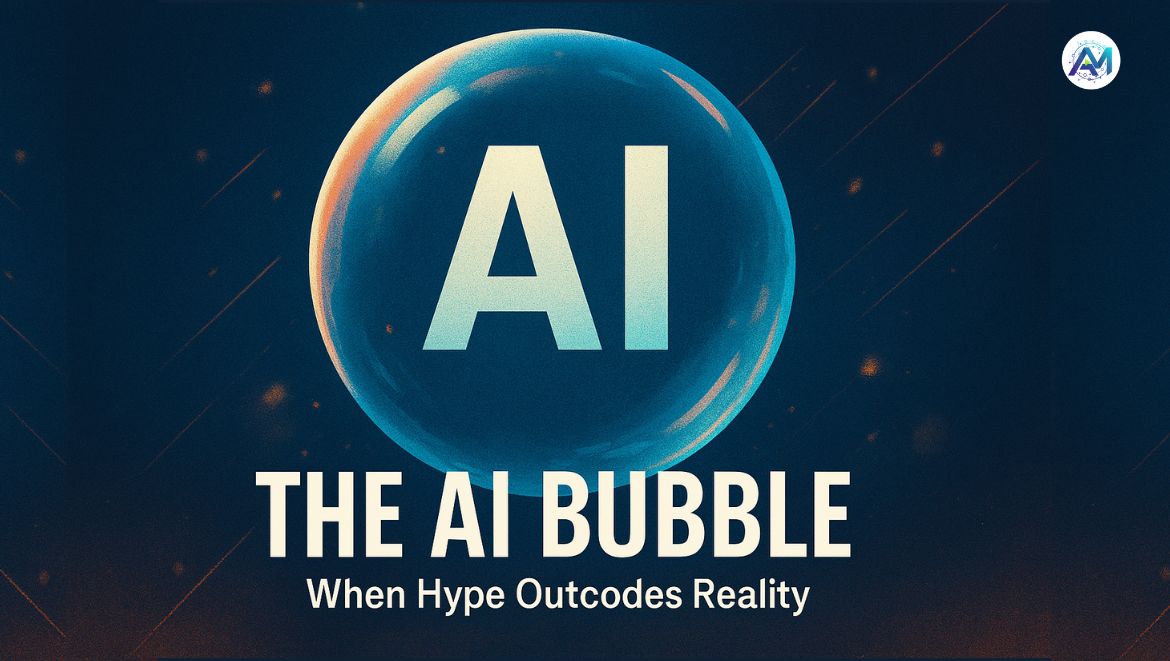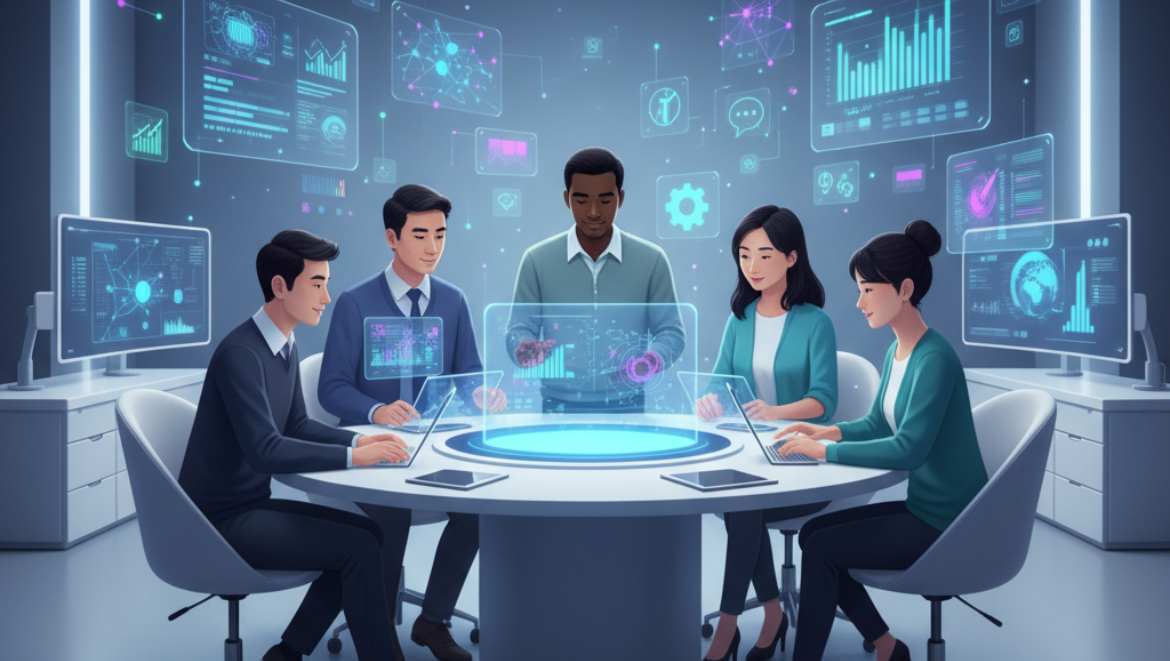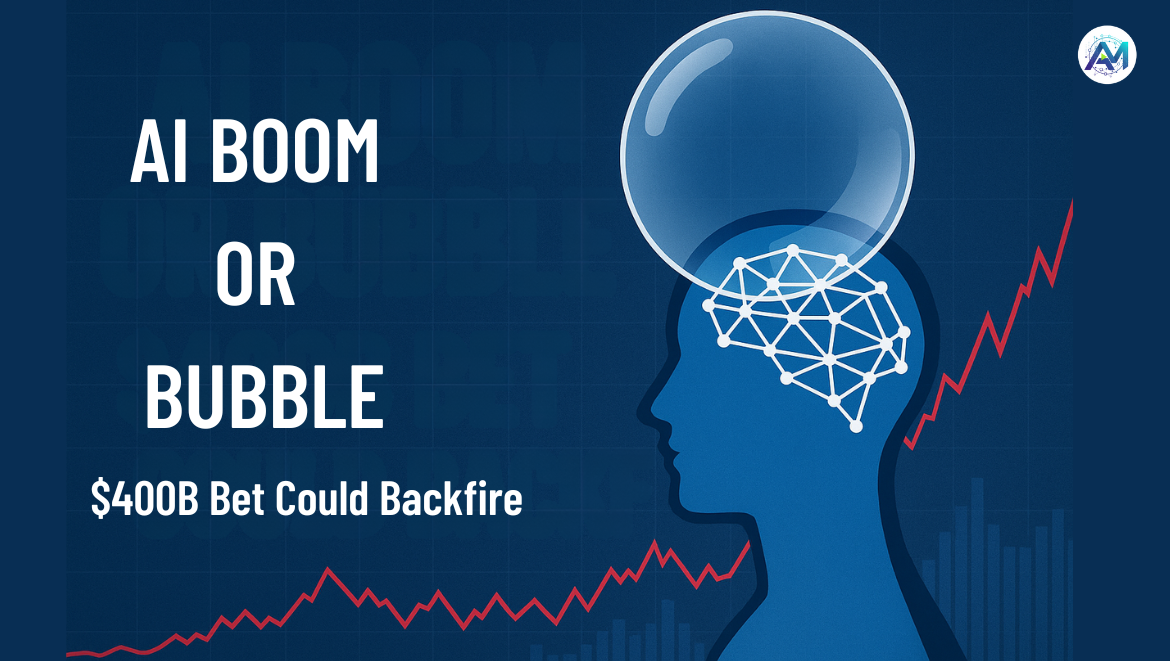For a technology obsessed with predicting the future, artificial intelligence has been surprisingly bad at predicting itself.
Two years ago, the story was simple: AI was the next electricity, the next internet, the next everything. Chatbots would run companies, code would write itself, and your laptop would suddenly understand you better than your friends. Venture capitalists emptied their pockets. Analysts rewrote their models. Even the skeptics bought in, if only to avoid missing the next gold rush.
Today, the artificial intelligence hype feels stretched—like a balloon that’s learned how to breathe.
A Mirage with a Market Cap
The numbers are staggering, absurd, poetic. Nvidia is worth more than the entire energy sector of Europe. OpenAI, Anthropic, and their copycats raise funding rounds larger than small nation budgets. Every startup pitch now comes with the same word in bold type: AI.
And yet, behind the noise, a quieter unease is growing. The systems that were supposed to transform the economy are mostly transforming slide decks. The promised productivity boom remains largely theoretical. The tech still hallucinates, misfires, and costs a fortune to run.
Economists Brent Goldfarb and David Kirsch, who study speculative manias, call AI “the textbook definition of a bubble.” They measure bubbles in four traits: uncertainty, pure plays, amateur investors, and a dominant story that explains everything. AI checks every box—twice.
The Cult of the Narrative
Every bubble has its mythology. The dot-coms had “eyeballs.” Crypto had “decentralization.” AI has “inevitability.”
We are told—daily, relentlessly—that AI will cure cancer, replace coders, drive cars, and rewrite the laws of creativity. The story has become self-propelling. It doesn’t need proof, only momentum. And momentum, it turns out, is the purest currency in Silicon Valley.
That’s how we got here: founders calling themselves “AI-first” before they have a product, investors buying chip stocks they don’t understand, and analysts writing billion-dollar valuations on napkins that smell faintly of FOMO.
Cristiano Amon, the CEO of Qualcomm, recently called this “a concentration of imagination masquerading as market logic.” Translation: people are buying belief, not businesses.
The Beautiful Fragility of Hype
This isn’t new. In 1929, it was aviation. In the 1990s, it was the web. Each time, we thought the world had changed forever—until gravity returned. The crash never kills the technology; it just strips it of delusion.
If AI does implode, it won’t vanish. The infrastructure will remain—the chips, the data centers, the algorithms that actually work. What will disappear is the myth of magic: the idea that intelligence itself can be industrialized on command.
The more interesting question isn’t if the bubble bursts. It’s what survives after it does.
The Hangover Will Be Strange
When the air escapes, it won’t sound like a pop—it’ll sound like silence. The endless demos, the breathless headlines, the CEOs promising “AI inside everything”—they’ll fade into a kind of embarrassed quiet.
But beneath the wreckage, something steadier will grow. Companies that use AI as a tool, not a prophecy. Engineers who care less about imitation intelligence and more about useful intelligence. A version of the technology that finally earns its keep.
That’s how progress usually works. We build the myth first, then the machine that almost lives up to it.
AI isn’t the end of history. It’s the latest chapter in our addiction to believing the future has already arrived.
The markets may call it innovation. History might call it déjà vu.
Read More: AI Boom or Bubble? $400B Bet Could Backfire



